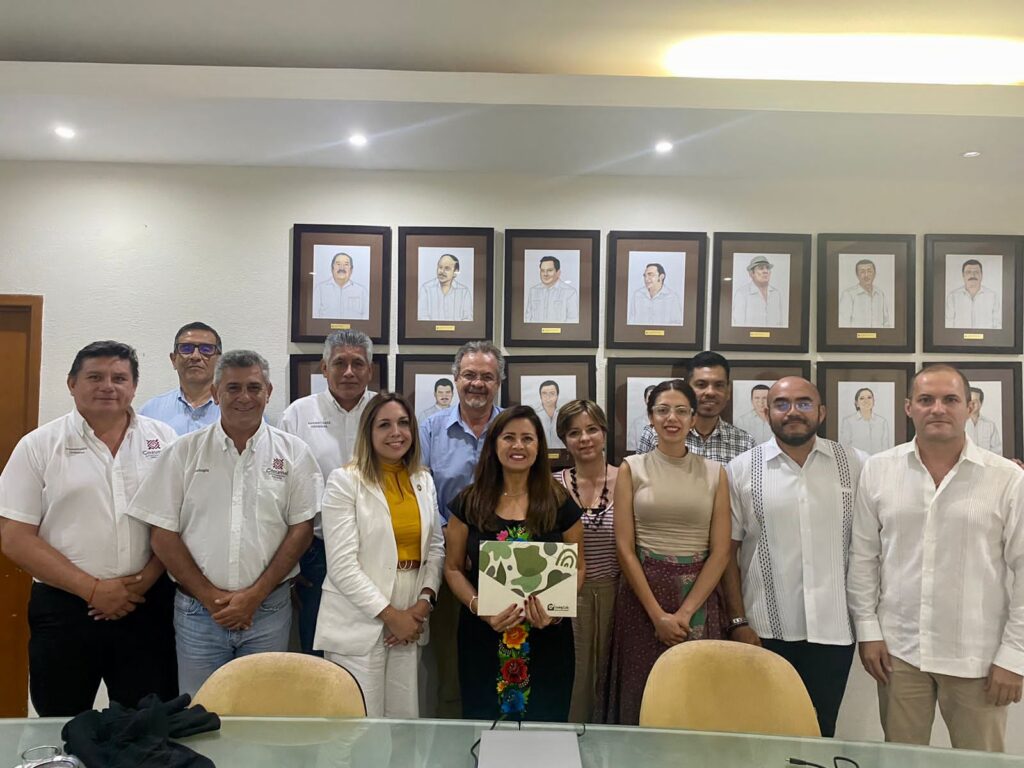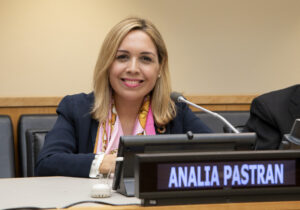
The world is at a critical juncture. Since 2020, cities in particular have been readapting to what is known as “the new normal.” Residents of cities, especially the poor and vulnerable, have been disproportionately affected by the social, economic, and political consequences of the Covid pandemic and other global crises.
Cities also increasingly feel the impacts of rising temperatures and extreme weather events due to climate change, caused by greenhouse gas emissions from human activities. Furthermore, recent armed conflicts have affected entire cities and communities, leading to widespread humanitarian crises.
These events have resulted in significant setbacks in efforts to eliminate poverty and create inclusive, safe, resilient, and sustainable cities. Humanity is not only falling short of achieving the United Nations Sustainable Development Goals (SDGs), but the future seems increasingly uncertain due to the acceleration of various crises, including environmental, economic, geopolitical, and societal challenges, which are widening disparities worldwide.
The current reality of climate change, pandemic risks, and wars devastating cities reinforces the urgent need to set cities on a path to creating a better urban life for future generations.
Access to safe, affordable, and healthy housing has now become a critical issue, with millions of people’s lives at risk due to its absence. On a global scale, the release of greenhouse gases is leading to climate changes that endanger life on Earth. According to the International Energy Agency (IEA), in the “Global Status Report for Buildings and Construction 2019,” the building industry contributes to approximately 39% of these emissions.
The current climate and energy crisis demands a discussion of sustainable construction and urban planning. One of the most important factors for sustainable construction relates to operational aspects of buildings, such as air conditioning and lighting. Making sustainable and energy-efficient improvements to buildings has significant potential to reduce their environmental impact and ultimately combat the climate crisis. Sustainable housing is a primary defense against climate change and health hazards. Through effective design and the use of sustainable building materials, and incorporating low-carbon, reusable, and zero-waste approaches, it is possible to significantly decrease carbon emissions and environmental impacts both in construction and from the resulting built environment.
Additionally, generating public policies that encourage the upcycling of existing buildings can bring about meaningful progress toward sustainable building practices. This approach promotes resource conservation, reduces waste, and fosters a more sustainable built environment.
The Galapagos Experience in Sustainable Construction
Islands have minimal influence on the climate crisis, but especially due to sea level rise and extreme weather events, they are the environments most vulnerable to it.
According to the Galapagos National Park, 97% of the Galapagos archipelago is designated as a protected area, while the remaining 3% constitutes urban and rural areas with a population of approximately 30,000 individuals.
In this region, the majority of buildings have been constructed using iron and cement, without considering the unique climate of the Galapagos. This oversight results in high water demand, and energy consumption -primarily generated by power diesel plants imported from the mainland-.
The Living Lab Sustainable Building Project or LLES (Living Lab de Edificación Sostenible in Spanish) conducted in the Galapagos archipelago is revolutionizing public, residential, and tourism infrastructure. The LLES Project has been developed specifically in Galapagos island contexts, to reduce the infrastructure’s environmental impact, and even more, to increase its resilience capacity. However, this initiative seeks to redefine the architectural paradigm globally, not only within the Galapagos. The primary goal of this project is to enhance the quality of life for individuals and their surroundings by transforming public buildings, residential structures, and hotels through sustainable construction practices.
The first islands participating in the LLES Project are:
SAN CRISTOBAL ISLAND
Building: Holguín Housing
Edifice with mixed program, typology of housing with productive use.
SANTA CRUZ ISLAND
Building: Galo Plaza Lasso School
Public building with an educational program.
ISABELLA ISLAND
Building: Hotel Paraíso de Isabela
Private construction in the tourism sector.
LLES Project promotes the transformation of the conventional construction paradigm, incorporating bioclimatic architecture strategies like passive measures (for example, protection of facades with urban trees, eaves -roof extensions-, and window screens -louvers, shutters-) to minimize heat gain and maximize cooling. Based on participatory processes with civil society and inter-institutional coordination, the following outcomes were developed:
Regulatory Framework: Public policies that promote sustainable building practices were implemented. This effort resulted in the establishment of three ordinances in three municipalities (San Cristobal, Santa Cruz, and Isabella) to encourage the transformation of existing building stock.
Transformation in Architecture: Nine architectural design packages were developed aimed at reducing electrical energy consumption and enhancing user comfort.
Strengthening Capacities. Learning spaces were created focused on architecture, engineering, and construction with an emphasis on sustainability. This initiative resulted in the establishment of a workshop school for construction agents and three experiential and demonstrative laboratories focused on a public building, a hotel building, and a residential building.
The project is scheduled to run for 36 months. It started in May 2021 and will conclude in May 2024. It is estimated that the improvements in the Galapagos built park represent a savings of between 28% and 50% of baseline energy consumption, increasing comfort, reducing economic investment in air conditioning, and improved the quality of life of users (house residents, students of the school and tourists in the hotel).
SDGs: LLES Project Contribution
Currently, building practices are destroying the planet. Faced with this reality, the Ecuadorian State is advocating for the decarbonization of the Galapagos by 2030 and is dedicated to aligning with the United Nations Sustainable Development Goals and the New Urban Agenda. The implementation of the Living Lab Sustainable Building Project (LLES) in the Galapagos Archipelago supports global initiatives to adapt to and mitigate climate change. This effort has been acknowledged as an Ecuadorian National Determined Contribution (NDC), the first of its kind in the Galapagos.
In this regard, the LLES Project has a substantial impact on advancing UN SDGs in Ecuador through its social impact processes, partnerships, and innovative solution development. For example, the Labs’s work contributes to SDG 7 (Affordable and Clean Energy), SDG 11 (Sustainable Cities and Communities), SDG 13 (Climate Action), and SDG 17 (Partnerships for the Goals). These results show that Project Living Lab has a wide-reaching influence on various SDGs, thereby contributing to overall sustainability and development objectives.
The LLES initiative is funded by the Euroclima+ program of the European Union, with technical support from the French Development Agency (AFD) and the Spanish Cooperation Agency (AECID). In the Galapagos Islands of Ecuador, the Governing Council of the Galapagos Special Regime (CGREG) is the project’s beneficiary, and the consortium’s partner institutions are the Municipal Decentralized Autonomous Governments of Santa Cruz, Isabela, and San Cristobal, as well as the Association of Ecuadorian Municipalities. Mentefactura carries out the implementation of the Living Lab Project. Moreover, the consortium, consisting of the Fundación Futuro Lationamericano (FFLA) and EBP Chile, is responsible for promoting replication in the Latin American context. Additionally, Smartly, a Social Entrepreneurship initiative focused on the Sustainable Development Goals (SDGs), is sponsoring the international replication and scaling of the Project.
To expand the impact, the lessons from the LLES Project process are being made available to similar places in Latin America and the Caribbean. Many locations in the region will thus be able to face current challenges together, in transitioning towards a new sustainable building paradigm in the region. In this sense, commitment and financing from public and private government sectors will enable sustainable urban development. This process strengthens the local regulatory framework, the development of technical solutions, and energy efficiency.
Replication: Islands from Mexico and Colombia
The LLES Project aims to replicate its success in Latin America and the Caribbean. To achieve this, LLES conducted a study and systematized indicators to select islands in the region with similar conditions and characteristics to the Galapagos. As a result of this study, three islands from Mexico (Holbox of Lazaro Cardenas, Isla Mujeres, and Cozumel) and one from Colombia (San Andres Island) were chosen.
Government authorities from these islands will have the opportunity to personally learn from the Galapagos experience and receive technical support for designing a project tailored to their local context. This support includes workshops with architects, sustainability and climate change experts, energy efficiency professionals, and more.
Additionally, technical visits are organized to showcase the rehabilitations carried out as part of the project. These visits have also facilitated the establishment of a Regional Sustainable Building Network and the signing of a commitment document to transition towards sustainable building and implementation of the project in the municipalities of the region.
Urban Thinkers Campus on Green Construction Practices and Lessons Learned
To promote best sustainability practices within the built environment, an Urban Thinkers Campus (UTC) -an initiative of the UN-Habitat World Urban Campaign (WUC)-, was organized with the support of Smartly, the International Union of Architects (UIA), and St. Gallen University, all of which are members of the WUC.
UTC serves as a knowledge-sharing platform that brings together diverse professionals, researchers, experts, academics, community leaders, and other stakeholders to discuss and address the contemporary urban challenges in the face of climate change and provide a space for reflection and collective action around critical urban issues. The event aimed to highlight the importance of the New Urban Agenda in addressing sustainable construction and urban planning, the UN Sustainable Development Goals, as well as the manifesto “The City We Need Now!” to raise awareness and promote positive changes to obtain green, healthy, well-planned urban initiatives to achieve SDG 11.
During the UTC, one of the highlighted best practices was the Galapagos experience through Project Living Lab or LLES Project, showcasing how it has contributed to transforming the architectural paradigm. This LLES Project ecosystem was developed over two and a half years through the collaboration of international cooperation agencies, consultants, local governments, civil society, and the private sector. Workshops and activities were organized to advocate for sustainability in the built environment to change the mindsets of local actors on this topic.
One of the lessons learned has been a profound understanding of how to capture local demands and contribute to the process of changing mindsets and improving sustainable building practices in the local community. Periodic activities, such as workshops, allowed the Project to gather the community’s feedback and adjust its targets accordingly, as well as to give information about sustainable construction practices.
One of the biggest challenges for the future is securing the commitment of government authorities for these efforts and initiatives, especially during times of rapidly evolving crises and limited resources. In this context, the guidance and support of international institutions become vital to ensure the process and results that humanity needs, as they can provide long-term processes that domestic institutions sometimes cannot due to democratic changes.


